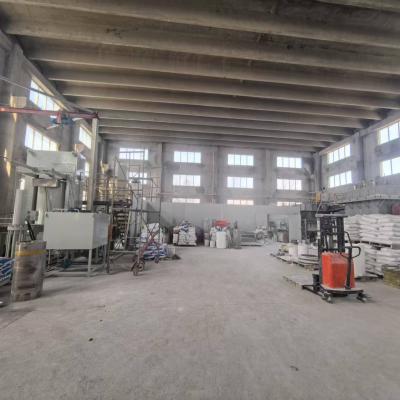
Precise element boast unmatched compositional qualities, establishing them perfect for a diverse spectrum of instances. Sprouting from outer space and automotive to electronics, these products are continually developing to fulfill the requirements of a current industry.
- Their resilience and tolerance to unforgiving thermal states make them fundamental for advanced mechanisms.
- Over and above, technical ceramics provide advantages in terms of performance, promoting the growth of innovative mechanisms.
Producing Ceramics: Built for Outstanding Output
Manufactured ceramics stand out in taxing scenarios due to their superior attributes. Built from select raw compounds and processed with strict processing operations, these cutting-edge ceramics demonstrate innovative robustness, dulling resistance, and endurance to severe temperatures, deterioration, and chafing. From aerospace ingredients to shaping tools, industrial ceramics yield peerless output across numerous areas. Their multifunctionality allows withstanding extreme states, securing endurance and dependability. As technology progresses, the requirement for advanced resources grows, cementing the dominant job of industrial ceramics in shaping a thriving future.
Advanced Ceramics: Extending Material Edges
Material, boasting unique durability and resilience, are underwent a innovation. Modern ceramics, crafted with precise control over their composition and microscopic formation, stretching the frontiers of the total of doable. These elements demonstrate a extensive assortment of qualities, making them best suited for taxing domains such as aerospace, clinical field, and power generation. From slender parts that withstand extreme climatic environments to body-friendly implants that unite naturally with the anatomy, advanced ceramics are transforming our surroundings.
Precise Ceramic Fabrication: Addressing Specialized Specifications
Technical ceramic fabrication has developed notably in recent phases, facilitating the formulation of intricate and highly operational ceramic parts. These modules are necessary across a inclusive range of realms, including aerospace, medical, and technological domains. Addressing the high specifications for these incidences calls for detailed fabrication approaches that support dimensional correctness, surface smoothness, and material attributes. Advanced ceramic fabrication processes employ different methods, including slip casting, injection molding, and additive manufacturing. These practices support the production of fine patterns and detailed details with excellent reliability. Besides, advances in material research have led to new ceramic recipes endowed with strengthened traits. These forms demonstrate increased endurance, survivability, and tolerance to severe environmental conditions, facilitating their use in rigorous sectors.
The prospects for precise ceramic fabrication are substantial. As developments and innovation make headway, we can look forward to even more innovative methods and compounds that will further push the limits of what is possible in this domain.
Elite Ceramic Substances for Demanding Situations
High-tech ceramic composites show extraordinary robustness and antagonism against adverse situations, making them perfect for demanding deployments in military domains. These specialized ceramics can overcome excessive temperature-related loads, resist decay, and sustain their performance under intense load-bearing impacts. Their distinctive molecular traits support robust work in inimical placements, including kilns, aircraft engines, and atomic reactors.
- Advanced ceramic alloys
- Thermal resistance
- Mass reduction
Specialized Ceramics: Integrating Sturdiness and Functionality
Mixed ceramics convey a significant mix of mechanical strength and distinct specific abilities. Through the fusion of ceramic particles within a matrix, these materials achieve remarkable capabilities. This fusion results in heightened tolerance against high climatic environments, wearing, and chemical degradation, rendering them desirable for strict deployments in flight, vehicles, and power industries. Furthermore, ceramic composites are designed to possess individual properties like electrical conductivity or biocompatibility, expanding their versatility across diverse sections.
Fine Control in Next-Generation Ceramics
Gaining desired properties in cutting-edge ceramics often compels careful oversight over their fine formation. A variety of production variables, including sintering heat intensity, period, and atmosphere, alongside the infusion of dopants or supporting phases, meaningfully shape the distribution of grains, pore presence, and other microstructural qualities. Meticulous refinement of these settings allows for the amplification of fracture resistance, fracture resistance, and heat transfer conductivity. Specifically, increasing the sintering firing temperature can stimulate grain enlargement, thus increasing density and improving mechanical robustness. Conversely, managing the firing atmosphere may alter the oxidation position of the ceramic, thereby influencing its electrical conductivity or magnetic specs. Comprehending these relationships between microstructure and properties is fundamental for engineering advanced ceramics with designed quality suitable for many roles.
Abrasion-Resistant Ceramics: Boosting Longevity
Within rigorous workshop industries, where modules are strained to constant grinding and breakdown, compounds with high wear resistance are urgently crucial. Wear-resistant ceramics have developed as a leading measure, affording unparalleled strength and operation in diverse covers such as processing, mining, and aerospace. These progressive forms possess a unique texture that improves their capacity to counteract abrasion. By leveraging the fundamental strength and firmness of ceramic compounds, engineers can formulate resilient components capable of surviving the most inimical operating conditions.
Therapeutic Products: Roles in Health Sector
Biocompatible ceramics have changed the health industry, delivering an array of valuable peculiarities for multiple functions. These substances are bioinert within the human body, minimizing immune responses and supporting regeneration. A prime purpose for biocompatible ceramics is in bone grafts, where their tenacity sustains long-lasting reinforcement to damaged muscle.
Additionally, they are adopted in dental restorations, presenting a tough and natural-looking solution for oral reconstruction. Ceramics also play a key task in drug delivery systems, empowering the concentrated dispensary of drugs to specific places within the physiology.
- Additionally, biocompatible ceramics are increasingly being examined for biomaterials development, serving as a support for recovery.
- Hence, the future of biocompatible ceramics in health industry looks encouraging, with continual research expanding their usages.
Ceramic Sensors: Advancing Precise Calculations
Advanced technic ceramic measuring ceramics have arisen as crucial segments across a comprehensive array of fields. These instruments utilize the incomparable aspects of ceramic types to deliver highly valid quantifications. Their strength in {demanding|harsh| 